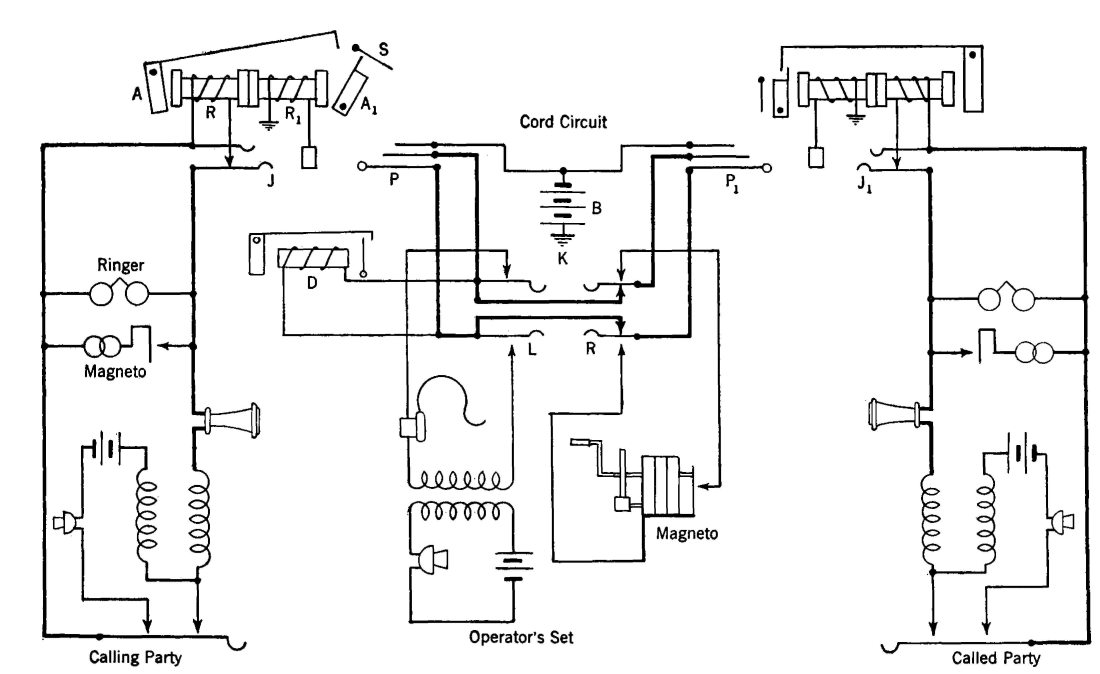| Electrical Communication is a free textbook on the basics of communication technology. See the editorial for more information.... |

|

Home  Telephone Exchange Service and Systems Telephone Exchange Service and Systems  Magneto Local-Battery Switchboard Magneto Local-Battery Switchboard |
|||






|
|||
Magneto Local-Battery SwitchboardWhen one telephone user wishes to talk with another on the same line of a magneto local-battery system, the first will call the second party by ringing with the magneto. This signal will be sent out before either receiver is removed from the hook, and thus all the parallel or bridged bells on the line are operated. Coded signals are used to call the desired party. When a magneto telephone user wishes to talk with another on a different line, the connections are made through a magneto switchboard (such as Fig. 6) in the central office.
To call the operator, the calling party turns the magneto crank several times and then removes the receiver from the hook. The magneto sends out an alternating current on the line and through the relay R. This energizes the relay, causing it to attract the armature A, which trips the armature A1, allowing it to drop forward and raise the shutter S, which displays to the operator the number of the calling line shown on A1. The operator answers this incoming call by inserting the plug P of one of the available vacant switchboard cords into the jack J of the calling line. When the plug is inserted, the connection of the relay R to the other side of the line is broken, and the talking current is not shunted through the relay windings. This plug also completes the battery circuit shown, and the relay winding R1 is energized by the battery B. The armature A1 is then attracted to its original position and the signal is cleared. In some boards this drop must be restored manually by the operator. After inserting the plug P of the cord circuit into the jack of the calling line, the operator throws the key K of the cord used to the (left) listening position L. This connects the operator's telephone to the cord circuit and to the calling party, and the operator takes the number of the party desired. The operator then inserts the plug P1 on the other end of the cord circuit into the jack J1 of the called line and throws the key K to the (right) ringing position R, This disconnects both the operator's set and the line of the calling party from the circuit, and the called party is connected and can be rung by turning the central-office magneto. In some instances two separate keys are provided for listening and ringing, and in the larger magneto systems a ringing machine supplants the hand generator or magneto. When the conversation is completed, either party signals the operator by ringing on the line. This causes the disconnect drop D to operate, indicating to the operator that the connection may be cleared.
|
|||
Home  Telephone Exchange Service and Systems Telephone Exchange Service and Systems  Magneto Local-Battery Switchboard Magneto Local-Battery Switchboard |
|||
Last Update: 2011-05-30


